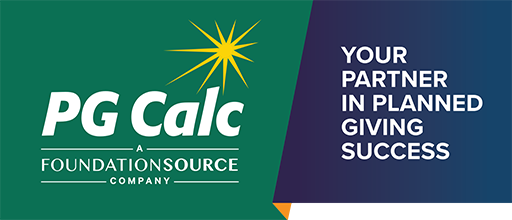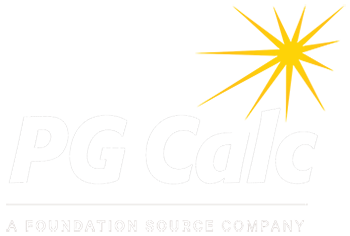Featured Articles
PG Calc publishes monthly articles on the latest topics in planned giving.
Summer Planned Giving Housekeeping
-For many shops, particularly those with a June 30th fiscal year, fundraising activity hits a slump in the dog days of summer. Your donors are taking hard-earned vacations or may even be away at a second home for the summer, making them hard to reach. Hopefully your staff is using some vacation time to rest and recharge. If you’re experiencing a lull in proposal drafting and donor visits in July and August, but your finance team has not yet roped you into annual reporting responsibilities, here is some PG housekeeping that can be attended to in this quiet time.
Analysis of the New ACGA Annuity Rates
-On April 22, 2022, Dave Ely, Chair of the American Council on Gift Annuities’ Rates and Regulations Committee, announced at the ACGA Conference that the ACGA would be increasing its suggested maximum annuity rates, effective July 1, 2022. We now know the details of the new rates, which the ACGA made public on June 2. The new rates replace the rates that became effective July 1, 2020. The ACGA’s decision to increase its suggested maximum gift annuity rates was triggered by the sharp rise in interest rates since the beginning of the year.
Note: Looking for PG Calc's analysis of the ACGA rates going into effect on January 1, 2023? See our blog post: Analysis of the New 2023 ACGA Annuity Rates.
The Other Five of the Top Ten Lessons Learned from the Front Lines of Client Services
-The world of planned giving is complex and fascinating. It is squarely at the intersection of philanthropy and estate planning, but it also overlaps with the areas of law, taxation, investments, and human behavior. There are so many nuances and specialty areas of knowledge that the gift planning professional can easily become overwhelmed and lose sight of the core issues. We at PG Calc hesitate to say, “we’ve seen it all,” but in some ways, we have!
We produce software for gift planning and gift administration, and we provide a wide array of services ranging from consulting to web services. We thought it might be helpful to pause for a moment and share what we’ve identified as the top 10 lessons (this is the first installment of 5) in planned giving that we have learned over the 37 years of our company’s existence. These are not necessarily in order of importance or relevance, and of course, they represent only a tiny portion of the knowledge required for any modern-day gift planner.
Undeliverable or Uncashed is Unacceptable!
-Uncashed checks, or tax forms and checks returned undeliverable! These are some of the most frequent and frustrating challenges for administrators of life income gifts.
With outright gifts, you deposit a donor’s check or other form of donation, send an acknowledgement letter, enter the person into your database, and reach out periodically. You certainly try to keep up with people’s moves … but for life income gifts, the stakes are a bit higher. Your organization must make income payments on a scheduled basis.
What to do?
Five of the Top Ten Lessons Learned from the Front Lines of Client Services
-The world of planned giving is complex and fascinating. It is squarely at the intersection of philanthropy and estate planning, but it also overlaps with the areas of law, taxation, investments, and human behavior. There are so many nuances and specialty areas of knowledge that the gift planning professional can easily become overwhelmed and lose sight of the core issues. We at PG Calc hesitate to say, “we’ve seen it all,” but in some ways, we have!
We produce software for gift planning and gift administration, and we provide a wide array of services ranging from consulting to web services. We thought it might be helpful to pause for a moment and share what we’ve identified as the top 10 lessons (this is the first installment of 5) in planned giving that we have learned over the 37 years of our company’s existence. These are not necessarily in order of importance or relevance, and of course, they represent only a tiny portion of the knowledge required for any modern-day gift planner.
Never Surrender! (Or Surrender Now!) – The Relinquishing of Life Income Gifts
-One of the planned giving trends that has evolved in recent years is the voluntary termination of life income gift arrangements. While not a part of the original intent in the creation of these gift plans, surrendering the remaining lifetime income in these split-interest gifts has become popular for a number of reasons. Certainly, there are obvious benefits to the sponsoring charitable organizations – these terminations eliminate the charity’s ongoing liability for payments, and of course, they receive the remainder amounts sooner than otherwise would be the case – but there are also benefits to the donors who relinquish their interests.
A Practical Approach to Receiving IRA Bequest Distributions
-Collecting the funds, when a donor makes a charity the beneficiary of an IRA, can be challenging. There has been much discussion about IRA administrators who, with a few exceptions, require charitable beneficiaries to establish an IRA account to receive a distribution from the donor’s IRA, 401(k), 403(b), or other qualified plan.
The Potential Costs of Giving
-It’s that most wonderful time of year again – lots of good cheer, too much fruitcake, not enough eggnog – and gifts – so many gifts! We see lots of gifts this time of year, and many different types of gifts – those between persons, certainly, but also gifts by employers, exchanges within groups, and of course, donations to charity. And in certain cases, the gifts fall into more than just one of those categories. In our world of planned giving, we frequently work with gifts that benefit both individual persons and charitable organizations. All of that is good, of course, but some gifts involve potential costs for the person doing the giving. It may seem counter intuitive, but in some cases, there are potential costs of giving.
To make sense of this apparent contradiction, let’s take a step back. If we leave out the charitable piece for a moment, we can focus on just the gifts that are made between persons. Most people would agree that one can never have too much money, but there are consequences of having great wealth under our tax structure. Since the early twentieth century, the United States has had a tax on the transfer of significant amounts of wealth between individuals. When we talk about “transfer taxes,” we are typically speaking about the taxes on transfers of wealth between living persons – “gift tax” – or taxes on the transfers of wealth from a deceased person to living persons – “estate tax.”
Now is the Time! Year-End Messaging to Close More Gifts
-Don’t Be Scared Off by CGA Regulations
-For any charity operating a gift annuity program, the question, “In what states do we need to register?” has likely come up (perhaps more than once). That may be closely followed by a declaration “we’re not registering in…” and the naming of one or more states accompanied by horror stories of the level of regulation they impose. Although complying with state gift annuity regulations does not top anyone’s “things I enjoy” list, the desire to avoid a certain state’s regulations can interfere with the success of your program.
Fortunately, a charity can issue in half of the states without being subject to any gift-annuity-specific registration, and if you tack on the 14 states that require only a notice of intent to issue, then the total grows to 39 states. The complexity really comes with the 11 more highly regulated states: Alabama, Arkansas, California, Florida, Hawaii, Maryland, New Jersey, New York, North Dakota, Tennessee, and Washington. While for some organizations their donor base is such that they want to be able to issue gift annuities in all states, for many it will make sense to weigh the cost (in time and dollars) of compliance with the benefit of expected gifts.
The question of where to register and issue should take into account the geographic reach of an organization and where it might have donors, but also the level of regulation in a given state as compared to the potential for gifts.

